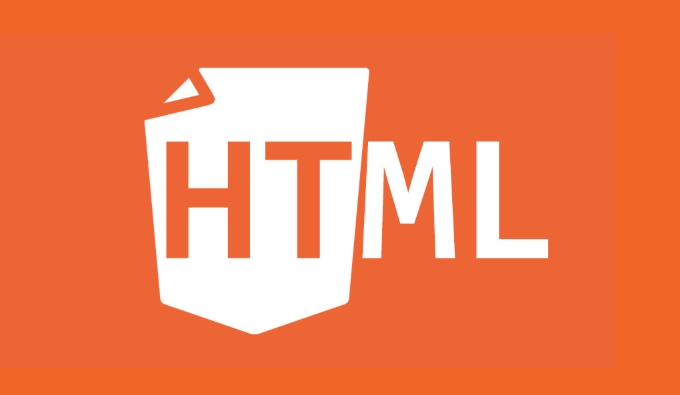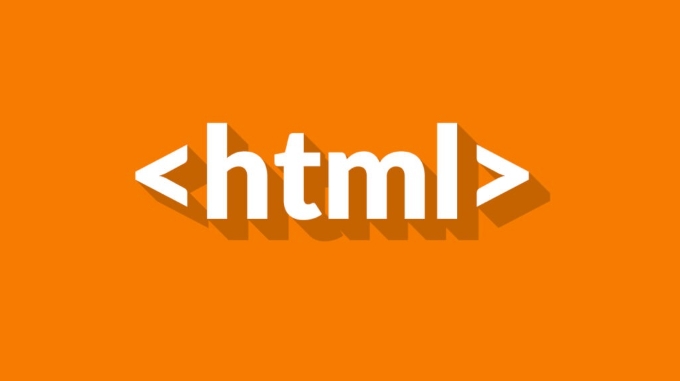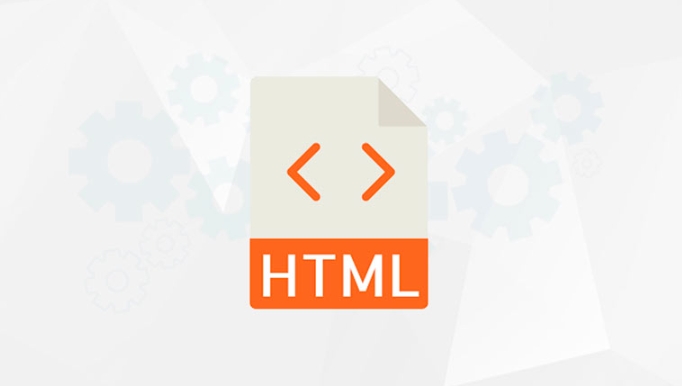What are custom data attributes and how are they used in html5?
Jul 13, 2025 am 02:28 AMCustom data attributes in HTML5 should be used to store small, non-sensitive pieces of data directly in HTML for access by JavaScript or CSS. 1. They are ideal for storing item IDs, UI states, or configuration options. 2. Access them via getAttribute() or the dataset property in JavaScript, with dataset using camelCase naming conventions. 3. Avoid overuse, sensitive data, and assume all values are strings requiring manual conversion. Always ensure changes trigger corresponding JavaScript logic as they do not affect page behavior automatically.

Custom data attributes in HTML5 are a way to store extra information in HTML elements without affecting the layout or behavior of the page. They start with data- followed by a name you choose, and they can hold any string value.

For example:

<div data-product-id="12345">Product Details</div>
This data-product-id attribute doesn’t do anything on its own, but it gives JavaScript or CSS a way to access custom values tied to that element.
When should you use custom data attributes?
They’re most useful when you need to pass small bits of data from HTML to JavaScript. Instead of hardcoding values in your scripts or making extra server requests, you can embed them directly into the markup.

Common use cases:
- Storing item IDs for dynamic content (like products in a list)
- Keeping track of UI states (e.g.,
data-expanded="true") - Passing configuration options to widgets or plugins
Just remember: these attributes aren’t meant for large data sets or sensitive info. Keep them simple and public-facing.
How to access data attributes with JavaScript
You can read and write them using standard DOM methods.
To get a value:
const element = document.querySelector('[data-product-id]');
const productId = element.getAttribute('data-product-id');To set a value:
element.setAttribute('data-product-id', '67890');If you're using modern JavaScript, there's also dataset, which is a bit cleaner:
const productId = element.dataset.productId; // "12345" element.dataset.productId = '67890';
Note that dataset uses camelCase for names after data-. So data-user-id becomes dataset.userId.
Things to watch out for
- Don’t overuse them: It’s easy to clutter your HTML with too many data attributes. Only use them when necessary.
- Avoid sensitive data: Since they’re visible in the source code, don’t store passwords or tokens.
- Use appropriate types: Data attributes always store strings, so if you need numbers or booleans, convert them manually:
const count = parseInt(element.dataset.count, 10); const isActive = element.dataset.active === 'true';
Also, keep in mind that changing a data attribute won’t automatically update anything on the page — you still need JavaScript logic to respond to those changes.
Basically, custom data attributes give you a clean way to attach extra info to HTML elements. They’re widely supported and fit well into modern web development practices when used thoughtfully.
The above is the detailed content of What are custom data attributes and how are they used in html5?. For more information, please follow other related articles on the PHP Chinese website!

Hot AI Tools

Undress AI Tool
Undress images for free

Undresser.AI Undress
AI-powered app for creating realistic nude photos

AI Clothes Remover
Online AI tool for removing clothes from photos.

Clothoff.io
AI clothes remover

Video Face Swap
Swap faces in any video effortlessly with our completely free AI face swap tool!

Hot Article

Hot Tools

Notepad++7.3.1
Easy-to-use and free code editor

SublimeText3 Chinese version
Chinese version, very easy to use

Zend Studio 13.0.1
Powerful PHP integrated development environment

Dreamweaver CS6
Visual web development tools

SublimeText3 Mac version
God-level code editing software (SublimeText3)

Hot Topics
 Is H5 a Shorthand for HTML5? Exploring the Details
Apr 14, 2025 am 12:05 AM
Is H5 a Shorthand for HTML5? Exploring the Details
Apr 14, 2025 am 12:05 AM
H5 is not just the abbreviation of HTML5, it represents a wider modern web development technology ecosystem: 1. H5 includes HTML5, CSS3, JavaScript and related APIs and technologies; 2. It provides a richer, interactive and smooth user experience, and can run seamlessly on multiple devices; 3. Using the H5 technology stack, you can create responsive web pages and complex interactive functions.
 Understanding H5 Code: The Fundamentals of HTML5
Apr 17, 2025 am 12:08 AM
Understanding H5 Code: The Fundamentals of HTML5
Apr 17, 2025 am 12:08 AM
HTML5 is a key technology for building modern web pages, providing many new elements and features. 1. HTML5 introduces semantic elements such as, , etc., which enhances web page structure and SEO. 2. Support multimedia elements and embed media without plug-ins. 3. Forms enhance new input types and verification properties, simplifying the verification process. 4. Offer offline and local storage functions to improve web page performance and user experience.
 HTML5: The Building Blocks of the Modern Web (H5)
Apr 21, 2025 am 12:05 AM
HTML5: The Building Blocks of the Modern Web (H5)
Apr 21, 2025 am 12:05 AM
HTML5 is the latest version of the Hypertext Markup Language, standardized by W3C. HTML5 introduces new semantic tags, multimedia support and form enhancements, improving web structure, user experience and SEO effects. HTML5 introduces new semantic tags, such as, ,, etc., to make the web page structure clearer and the SEO effect better. HTML5 supports multimedia elements and no third-party plug-ins are required, improving user experience and loading speed. HTML5 enhances form functions and introduces new input types such as, etc., which improves user experience and form verification efficiency.
 HTML5: The Standard and its Impact on Web Development
Apr 27, 2025 am 12:12 AM
HTML5: The Standard and its Impact on Web Development
Apr 27, 2025 am 12:12 AM
The core features of HTML5 include semantic tags, multimedia support, offline storage and local storage, and form enhancement. 1. Semantic tags such as, etc. to improve code readability and SEO effect. 2. Simplify multimedia embedding with labels. 3. Offline storage and local storage such as ApplicationCache and LocalStorage support network-free operation and data storage. 4. Form enhancement introduces new input types and verification properties to simplify processing and verification.
 HTML5 and H5: Understanding the Common Usage
Apr 22, 2025 am 12:01 AM
HTML5 and H5: Understanding the Common Usage
Apr 22, 2025 am 12:01 AM
There is no difference between HTML5 and H5, which is the abbreviation of HTML5. 1.HTML5 is the fifth version of HTML, which enhances the multimedia and interactive functions of web pages. 2.H5 is often used to refer to HTML5-based mobile web pages or applications, and is suitable for various mobile devices.
 The Connection Between H5 and HTML5: Similarities and Differences
Apr 24, 2025 am 12:01 AM
The Connection Between H5 and HTML5: Similarities and Differences
Apr 24, 2025 am 12:01 AM
H5 and HTML5 are different concepts: HTML5 is a version of HTML, containing new elements and APIs; H5 is a mobile application development framework based on HTML5. HTML5 parses and renders code through the browser, while H5 applications need to run containers and interact with native code through JavaScript.
 Understanding H5: The Meaning and Significance
May 11, 2025 am 12:19 AM
Understanding H5: The Meaning and Significance
May 11, 2025 am 12:19 AM
H5 is HTML5, the fifth version of HTML. HTML5 improves the expressiveness and interactivity of web pages, introduces new features such as semantic tags, multimedia support, offline storage and Canvas drawing, and promotes the development of Web technology.
 H5: Exploring the Latest Version of HTML
May 03, 2025 am 12:14 AM
H5: Exploring the Latest Version of HTML
May 03, 2025 am 12:14 AM
HTML5isamajorrevisionoftheHTMLstandardthatrevolutionizeswebdevelopmentbyintroducingnewsemanticelementsandcapabilities.1)ItenhancescodereadabilityandSEOwithelementslike,,,and.2)HTML5enablesricher,interactiveexperienceswithoutplugins,allowingdirectembe






